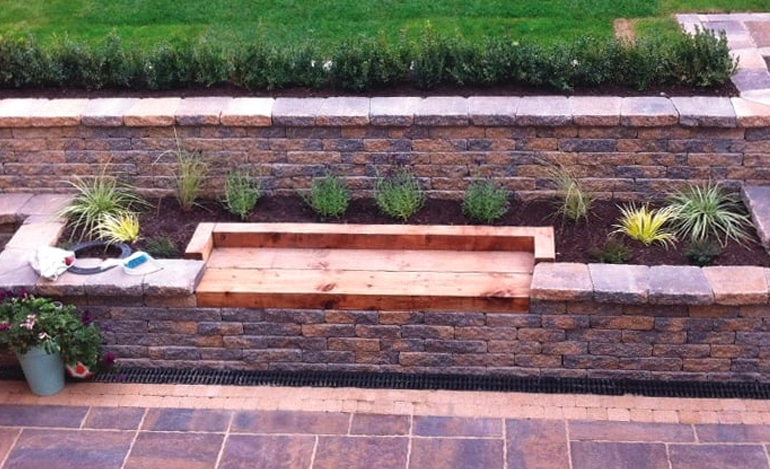
If you enjoy visiting National Trust stately homes, the chances are you’ll have had a walk around a walled garden. Historically this would have been constructed to create a micro-climate in which to grow fruit, vegetables and flowers for use in the big house. There would usually also have been a large Victorian lean-to glasshouse with heating in the winter. Such exotic delicacies as pineapples would have been grown to really impress dinner guests.
Most keen gardeners would give anything to have a walled garden like this but it may remain out of reach. However, some people may not have noticed that they already have a walled garden. It may not be Sissinghurst, but a smaller version can still be used to create the same effect.
Many back gardens are bordered by a garage wall (perhaps yours or your neighbours). The sun will heat up this wall during the day and the heat will radiate out at night. Against a wall you may grow espalier fruit trees, climbing plants, raspberries, peas and beans, etc. The base of a wall is often in a rain shadow and the soil may contain builders rubble and hardcore from the construction. In this case the plants will require extra nutrition and moisture, so dig in a wheelbarrow full of organic matter such as well rotted manure or garden compost.
A lean-to greenhouse could also be used as a summer house to sit in even in winter. However, if the wall belongs to your neighbours you may need permission before building anything against it. A wooden arbour can be positioned against a wall and is planted with climbers. This will act as a focal point in the garden as well as somewhere to sit and admire the scenery. An arbour is quite rustic so this could be combined with a path in traditional style brick paving such as Tobermore’s Retro Heather.
Green ‘living’ walls are very popular in European cities, but they require extensive irrigation and artificial fertiliser if they are to survive. Green wall systems are available to purchase but they are quite expensive although very impressive if successful. Plants such as sedum and saxifrage which have very shallow roots are perfect for this idea.
On close inspection you may notice that your wall is a haven for wildlife. If you grow evergreen wall shrubs such as pyracantha, cotoneaster, ivy and honeysuckle, you will create nesting sites for small garden birds which are in decline. In addition to this you may notice the tiny nesting holes of solitary bees and mason bees – don’t panic – they are both stingless and totally harmless. Bumble bees like to hibernate in crevices in walls. They are becoming endangered due to people tidying their gardens too much and using pesticides, so they need all the help they can get. Pollinating insects are essential for a lot of crops and fruit trees so please try to encourage them in to your garden.
Have a look at our walling products to see the product options available for building your walled garden.